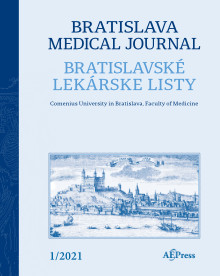Journal info
|
||||
Select Journal
Journals
Bratislava Medical Journal 2024 2023 2022 2021 2020 2019 2018 2017 2016 2015 2014 2013 2012 Ekologia - Ecology Endocrine Regulations General Physiology and Biophysics Neoplasma Acta Virologica Studia Psychologica Cardiology Letters Psychológia a patopsych. dieťaťa Kovove Materialy-Metallic Materials Slovenská hudba 2025Webshop Cart
Your Cart is currently empty.
Info: Your browser does not accept cookies. To put products into your cart and purchase them you need to enable cookies.
Bratislava Medical Journal Vol.113, No.3, p.139-144, 2012 |
||
| Title: The protective effects of ketamine and propofol in obstructive jaundice: an experimental study | ||
| Author: H. Yildiz, I. Coskuner, E. Bulbuloglu, E. Silay, E. B. Kurutas, Z. Dogan, B. Kantarceken, H. Oksuz, N. Senoglu, M. F. Yuzbasioglu, A. Cetinkaya, H. Ciralik | ||
| Abstract: Objective: In this study, we investigated the protective effects of frequently used intravenous anesthetics (ketamine, propofol, thiopental, and fentanyl) in oxidative stress in a rat liver model of obstructive jaundice. Materials and methods: Thirty-two Wistar albino rats were divided into four groups in a randomized fashion. All rats were subjected to laparotomy, common bile duct ligation and severance on day 0. Following 7 days, laparotomy was again performed using ketamine, propofol, pentobarbital, or fentanyl anesthesia. After 2 hours, the animals were sacrificed and tissue specimens were acquired for histopathological scoring and determination of malondialdehyde (MDA), superoxide dismutase (SOD) and catalase (CAT) activities. Results: All rats demonstrated enlargement in the bile duct, obstructive jaundice, and histopathologic ductal proliferation. MDA and SOD levels were significantly lower in the ketamine group compared with the thiopental and fentanyl groups. CAT was significantly increased in the ketamine group compared with the other groups. The best portal polymorphonuclear leukocyte and necrosis scores were in the ketamine group, but this difference was not statistically significant ( p=0.07) Conclusion: Ketamine and propofol were observed to cause the least amount of oxidative stress in this rat model of induced oxidative stress generated by ligation of the common bile duct. This experiment is the first study on this subject in the literature (Tab. 3, Ref. 65). |
||
| Keywords: ketamine, propofol, common bile duct, rat. | ||
| Year: 2012, Volume: 113, Issue: 3 | Page From: 139, Page To: 144 | |
| doi:10.4149/BLL_2012_034 |
||
|
|
 download file download file |
|

